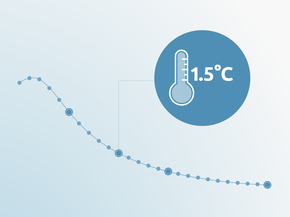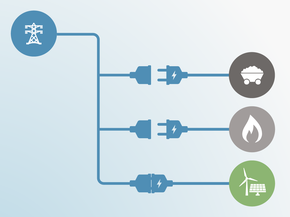Country summary
Overview
Japan's coal plant construction plans, which could add a possible 17 GW of coal power, remain a concern and pose a serious risk to the government's future mitigation efforts. We project that the coal share could further increase to 34% by 2030 from 32% in 2015 if the nuclear reintroduction fails without a further push for renewables. Coal could add about 100 MtCO2e a year to Japan's emissions.
The Japanese government’s new Basic Energy Plan and a long-term energy strategy is currently under development by the Ministry of Economy, Trade and Industry (METI). The outcomes from the expert committees for their formulation have so far been disappointing because there was little discussion on how Japan can go beyond its 22–24% by 2030 renewable electricity target, which is likely to be achieved with current policies. Instead they focused more on whether new nuclear reactors could be constructed toward 2050 and how to reduce the economic costs resulting from the renewable electricity support scheme.
Another point of concern is the development of a long-term strategy to be prepared during FY2018, where two government ministries appear to be at odds with each other. While both the Ministry of the Environment (MOEJ) and the Ministry of Economy, Trade and Industry (METI) have laid groundwork and published reports in 2017, they take fundamentally different directions. The MOEJ focuses on how to achieve the 80% by 2050 reduction target domestically, and emphasises a need for the early introduction of a fully-fledged carbon pricing scheme. In complete contrast, the METI emphasises the difficulty of achieving the 80% reduction domestically and focuses instead on Japan’s international contribution to global emissions reductions. The METI report is also critical about any introduction of a full-fledged, nation-wide carbon pricing in the near-term.
Japan’s future emissions are challenging to predict, owing to uncertainty around the future role of nuclear, coal and renewable energy. Nevertheless, the Government’s current energy policy could bring its NDC target - of 26% below 2013 emission levels including LULUCF (18% below 1990 levels) by 2030 - within reach, highlighting the fact that its NDC target could be more ambitious. Currently implemented policies will lead to emissions levels of 8–12% below 1990 levels in 2030, excluding LULUCF. The also results indicate that under current policies, Japan will overachieve its 2020 pledge regardless of the future role of nuclear power.
Japan’s proposed Kyoto Protocol-like accounting of sinks (land use change and forestry) in its NDC reduces its effective target by about 3% below 1990 levels, resulting in a target of 15% below 1990, excl. LULUCF. We rate the target “Highly insufficient,” meaning that if all countries were to adopt this level of ambition, global warming would likely exceed 3–4oC in the 21st century. This is in stark contrast to Japan’s claim that its NDC is in line with a pathway consistent with the Paris Agreement’s long-term temperature goal.
Under our CAT analysis an “Insufficient” rating would require an emissions level of 980 MtCO2e/yr in 2030 or 20% below 1990 levels, a “2°C compatible” rating would require an emissions level of 293 MtCO2e/yr in 2030 or 76% below 1990 levels. This stands in stark contrast to Japan’s claim that the NDC is in line with a 2°C target.
The share of renewable energy in total electricity generation has increased considerably - from 8.8% in FY2010 (pre-Fukushima) to 15.0% in FY2016, partly due to the generous feed-in tariff scheme introduced in 2012. While the Government has recently amended the scheme to avoid the “solar bubble” observed in the last few years due to high tariff rates and flaws in policy design, an increasing number of biomass projects, mainly co-firing imported biomass with coal, have since been approved, and there are serious concerns about the overall environmental effectiveness of the revised FIT scheme (Renewable Energy Institute, 2017b).
Further analysis
Latest publications
Stay informed
Subscribe to our newsletter






